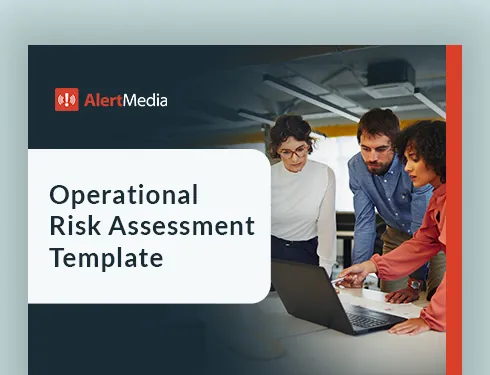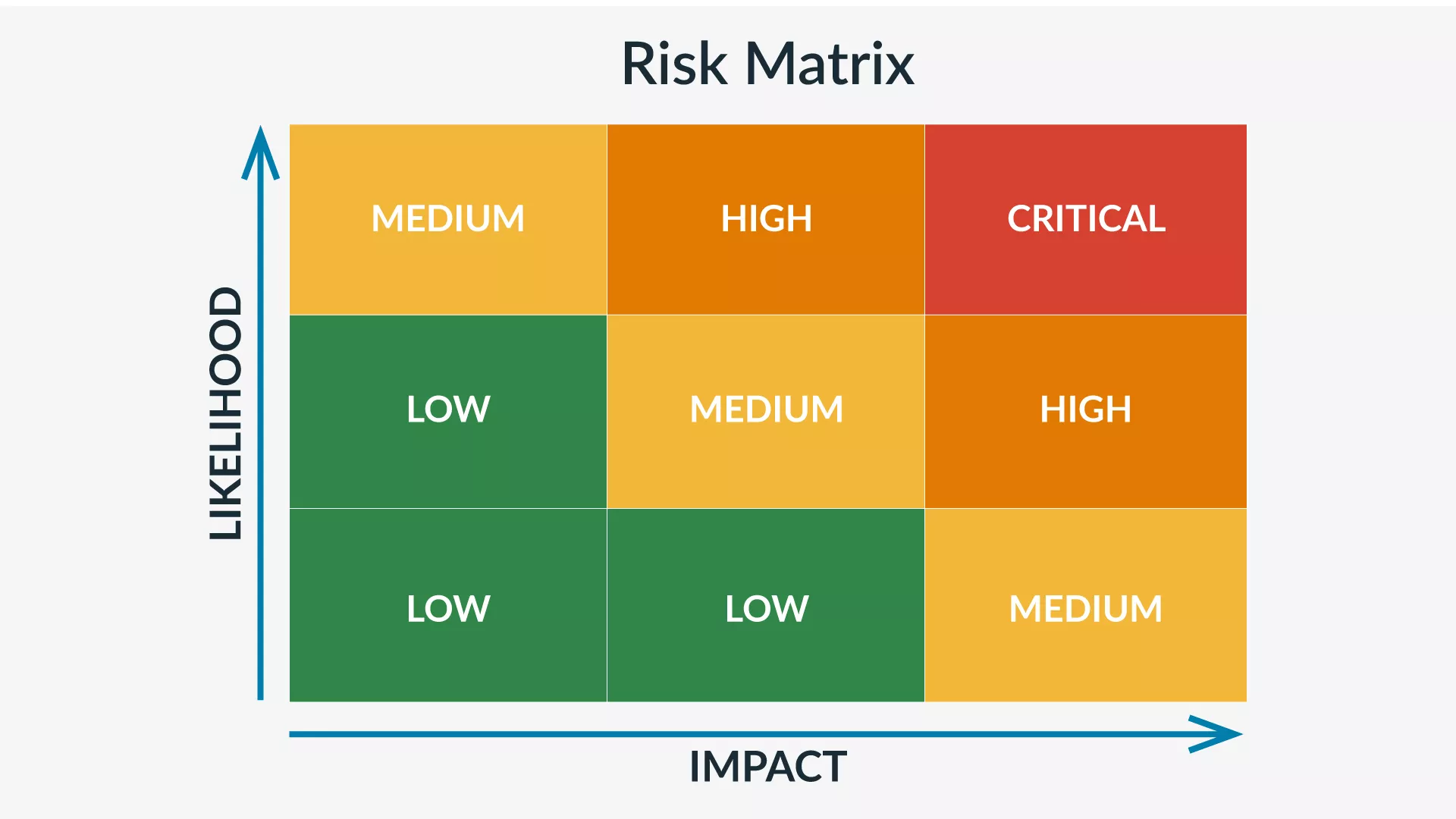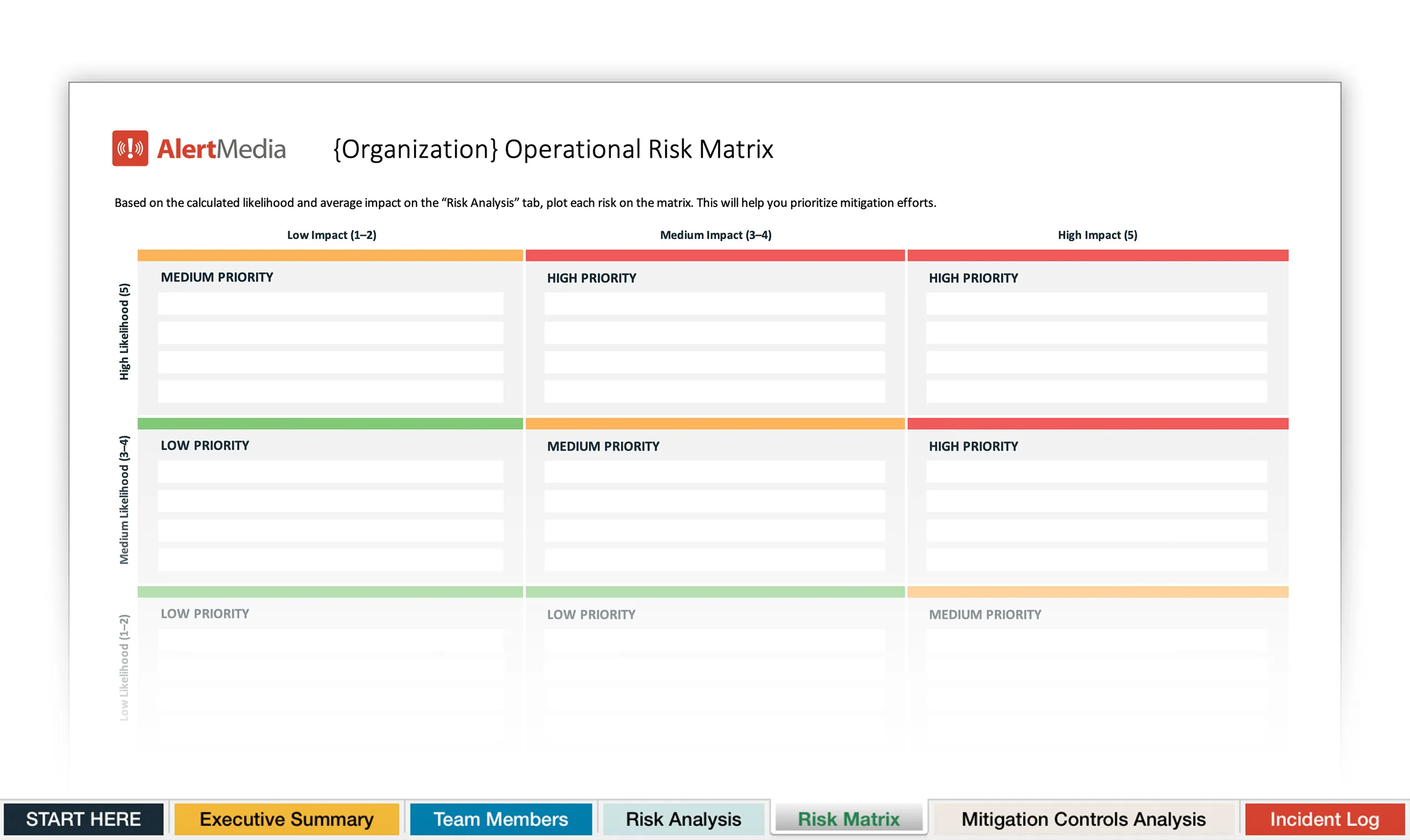
What Is a Risk Matrix and How to Use One in Your Business
Get a simple, visual overview of a project’s potential roadblocks with a risk matrix. Assess and prioritize the risks of any team or company-wide project using our downloadable template.

What happens when you’re planning a company-wide event, and the venue unexpectedly cancels a week out? Or, when you’re the lead engineer on a product development team and a critical feature breaks right before the release date?
Challenges like these and others can leave you scrambling to find an alternative solution, stressed, and unsure about the project’s success. Or, you could spring into action because you used a risk matrix during the project planning phase and developed alternate options.
A risk matrix helps you identify, assess, and manage risk before it occurs, keeping your projects on track and saving you time, money, and resources. Read on to learn how to use this strategic risk analysis tool for your risk management.
Download Our Operational Risk Assessment Template
What Is a Risk Matrix?
A risk matrix (also called a risk assessment matrix, risk control matrix, or risk analysis matrix) is a charting tool for showing the range of potential risks to a business. The tool assesses and prioritizes risks based on two main factors: the likelihood of an event occurring and the severity of its consequences.
A risk matrix has two axes—one for likelihood of occurrence (probability) and one for risk severity (impact). Risks are laid out on a 5×5 grid (or 4×4 or 3×3 for a simpler version) and each cell represents a specific risk scenario.
You’ll assign each cell a risk level, from very low to very high, based on where they fall in the matrix. For example, a risk with high likelihood and high severity (such as a hurricane in Florida between August and September) would be classified as high risk.
To help you understand your risk priorities at a glance, risk matrices are often color-coded, with high risks in red, moderate risks in yellow, and low risks in green.

With this simple format, your team has a clear view of the challenges and can quickly decide where to start mitigating risk. Just plug your risks into the color-coded risk analysis matrix to begin prioritizing your mitigation efforts.
Benefits of using a risk matrix
When you’re time-strapped and option-overwhelmed, you might wonder if using a risk matrix is the right solution. As a basic risk identification and analysis tool, the risk matrix has a lot going for it, namely:
- Simplicity: Easy to create, use, and modify
- Flexibility: Can be used project-, team-, or organization-wide across all industries
- Ease of use: Uses a visual format as a simple way to communicate a complex risk landscape to stakeholders (helpful for reporting, gaining buy-in, and for better decision-making)
For these and other reasons, risk management professionals across industries like finance, construction, technology, and transportation use them to:
- Identify potential hazards
- Gain an overview of the risk landscape
- Compare and prioritize in case of multiple threats occurring at once
- Focus resources and attention on the most critical threats
- Improve decision-making about risk management
- Lessen the impact of risks through planning, preparation, and training
- Strengthen their mitigation strategies and risk management plans
- Monitor ongoing risk using before-and-after comparisons
Limitations of risk matrices
Though most project planners would probably shell out a fortune for it, there’s no such thing as a perfect assessment tool. Here are some of the challenges of risk matrices:
- Risk categories may be too broad to clearly differentiate levels of risk
- Assessing uncertain risks is often subjective
- Incorrect risk categorization can lead to poor decisions
- Risk matrices don’t account for more complex or dynamic risks
When Should You Use a Risk Matrix (or Not)?
Given these strengths and challenges, when does it make sense to use a risk matrix? As with most business decisions, it depends on the context, but here are some situations where it might make sense to use a risk matrix.
When to use a risk matrix
Ideally, you’ll use a risk matrix during project planning to identify potential roadblocks. When applied early on in the risk management lifecycle, this tool is a great starting point for more detailed planning.
Think about using a risk matrix when you need to:
- Prioritize multiple concurrent risks and develop a mitigation strategy
- Present complex risk data in a simple way
- Identify and categorize risks for targeted responses
- Assign resources based on likelihood and potential impact
- Continuously monitor and reassess risks over time
When NOT to use a risk matrix
A risk matrix is great for broad assessment, but you may need to supplement it with other methods in some situations. A risk matrix alone might not work if you are dealing with:
- Rapidly evolving and time-sensitive situations such as an active shooter event
- Scenarios with complex or interdependent risks, like climate change
- Incidents when you need to have precise resource allocation
Imagine a pharmaceutical company managing multiple drug development projects. Each project has specific timelines, costs, and regulatory hurdles. A risk matrix can broadly assess and lay out the risks associated with each project, like delays or budget overruns. With that, the team can decide, “Ok, if we run into a crunch with the FDA approval deadline, we can add extra researchers to help us work faster.” However, you may need a more granular approach to more precise allocations, such as how many researchers to assign to the project.
Risk matrix examples
Your company may face many operational risks, from inflation and interest rates to unprecedented storms and industry-shattering new technologies. Let’s look at just a few possible risk matrix examples.
Let’s say you’re working on a new company-wide IT system upgrade. For this project, you run the risk of system downtime due to an error or failed patch. System downtime would count as a significant to major risk since it could result in financial and operational losses. However, proper planning makes the risk manageable, and any outages are short-lived. So, you might categorize it as a moderate or medium priority on the risk matrix.
Or, if you’re in retail, you could use a risk matrix to track and improve supply chain issues over time. For example, losing a supplier might be categorized as a severe risk when you have one or two to rely upon. However, as you build relationships with backup vendors, you can recategorize the risk as lower based on the new circumstances. You can also refocus those resources on other, higher-priority risks.
How to Use a Risk Assessment Matrix
The risk matrix assessment process is similar to a standard operational risk assessment. Here’s how it works:
1. Identify the risks
In this first step, you need to identify all potential project risks. Have a brainstorming session with key stakeholders to build a thorough list of things that could prevent your organization from achieving its objectives. Risk factors could be internal or external and may be related to all aspects of the project (e.g., budget, resources, processes, technology, or partnerships).
2. Define the risk criteria
Once you’ve noted all potential roadblocks, you need to define the evaluation criteria. Typically, this involves specifying the levels you’ll use to quantify the probability and consequences of the risk occurring.
For example, for a 5×5 risk matrix, you might use rare, unlikely, moderate, likely, and almost certain to define risk probability. And you could use insignificant, minor, significant, major, and severe to define levels of impact. Make sure everyone is on the same page about the meanings of each term.
3. Evaluate the risks
Some risks (like a data breach) could have catastrophic impacts, while others (like a sick employee) will make minor ripples. In this step, you’ll take identified risks and assess where they fall in the matrix. Think about each threat and its potential consequences—is it likely to cause injuries? Will it delay project completion? Cause operational bottlenecks? Make it impossible to serve customers and complete sales?
Use your risk criteria from step 2 to categorize each risk, where Probability x Impact = Risk Level.
4. Assign risk categories
After you’ve identified and evaluated various types of risk, give each one a risk rating and plot it on the matrix. Most often, a quantified risk will fall into one of three risk categories:
- Low risk — Acceptable (green)
- Moderate risk — May or may not be acceptable (yellow)
- High risk — Unacceptable (red)
As our risk matrix template shows, it’s possible to have multiple scenarios in each category. Entering them all into the risk matrix allows you to see the full picture and track many different risks at once.
Preview of the risk matrix in the Operational Risk Assessment Template
5. Prioritize the risks and develop action plans
For the final step, use the completed matrix to see high-priority risks and create plans to tackle them. Outline which risk mitigation strategies you’ll use to get back on track, such as added safety checks, alternate suppliers, updated processes and training, or other emergency plans.
Of course, responsible risk management is not static. You’ll need to revisit and monitor your risk matrix on an ongoing basis and adjust plans as needed.
Get Ahead of Risk With Simple and Effective Tools
Whether it’s a canceled event venue or a critical software glitch, unexpected challenges are inevitable. A risk matrix offers a proactive yet easy way to anticipate potential issues and prepare accordingly.
A risk matrix provides a clear overview of your project’s risk landscape. It is essential to any project manager’s toolkit, especially when used early in the planning process. When combined with a culture of business resilience and safety preparation, the results are even more powerful, leading to better resource allocation, quicker decision-making, and smoother project management.
Are you ready to get ahead of potential threats and prepare yourself with a plan B, C, and D? Our template helps you chart and prioritize multiple concurrent risks using a simple red, yellow, and green format.





